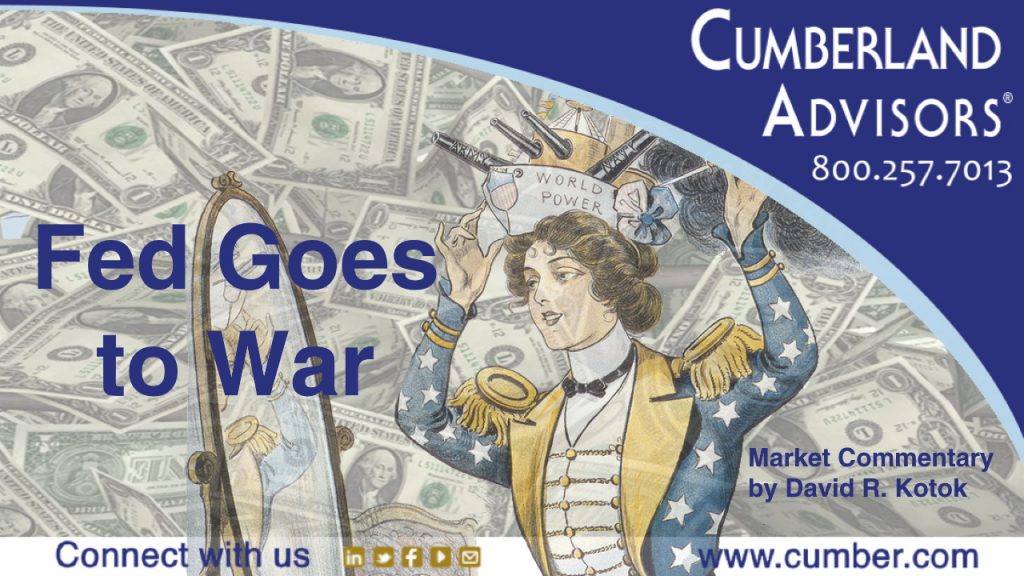The April 12, 2020, posting on the Money, Banking and Financial Markets site, entitled “The Fed Goes to War: Part 3,” expands on the discussion of the extraordinary measures taken recently by the Federal Reserve. You can read the posting and learn more about this superb site and its authors here: https://www.moneyandbanking.com/commentary/. Let me offer a personal endorsement: I find the site consistently and exceptionally helpful.
Much has already been written about about this expansion of the Fed’s arsenal and the list of new facilities. Essentially, the playbook for last decade’s Great Financial Crisis has been reopened, and a whole new set of tools has been added. It is likely that this process will continue for months, until the COVID-19 response includes an effective vaccine in mass distribution. We recommend that readers examine the details of the Fed’s programs, since each of them will have some direct impact on your investments, asset allocations, business operations, and financial wellbeing or lack of same.
We also recommend that serious readers review the working papers recommended in the article, including those by Humpage (https://ideas.repec.org/p/fip/fedcwp/1402.html) and Carlson and Wheelock (https://ideas.repec.org/p/fip/fedlwp/2014-013.html). We agree with the authors about the value of learning the history of the Fed leading up to and including the WW2 period and the subsequent negotiation of the Treasury-Fed Accord of 1951. We expect that history to be revisited and updated after the COVID-19 crisis starts to recede into history.
Between now and then we expect that the Fed’s balance sheet will reach levels heretofore unpredicted and difficult to imagine. We also expect the federal deficit to reach multitrillion-dollar levels and for the massively enlarged federal financing program to continue for at least two years.
To understand the Federal Reserve’s role during the WW2 era, we recommend that serious readers review two books. The first is A History of the Federal Reserve, Volume 1: 1913–1951, by the late Allan Meltzer (https://www.press.uchicago.edu/ucp/books/book/chicago/H/bo3634061.html). Readers are advised to pay particular attention to Chapter 7, entitled “Under Treasury Control, 1942 to 1951.”
The second book is the monumental treatise entitled A Monetary History of the United States, 1867–1960, co-authored by the late Milton Friedman and the late Anna Jacobson Schwartz (https://press.princeton.edu/books/paperback/9780691003542/a-monetary-history-of-the-united-states-1867-1960). We advise readers to immediately read Chapter 10, which discusses the World War 2 period and the Federal Reserve’s policy actions as the United States vastly expanded its deficits and prosecuted the Second World War.


